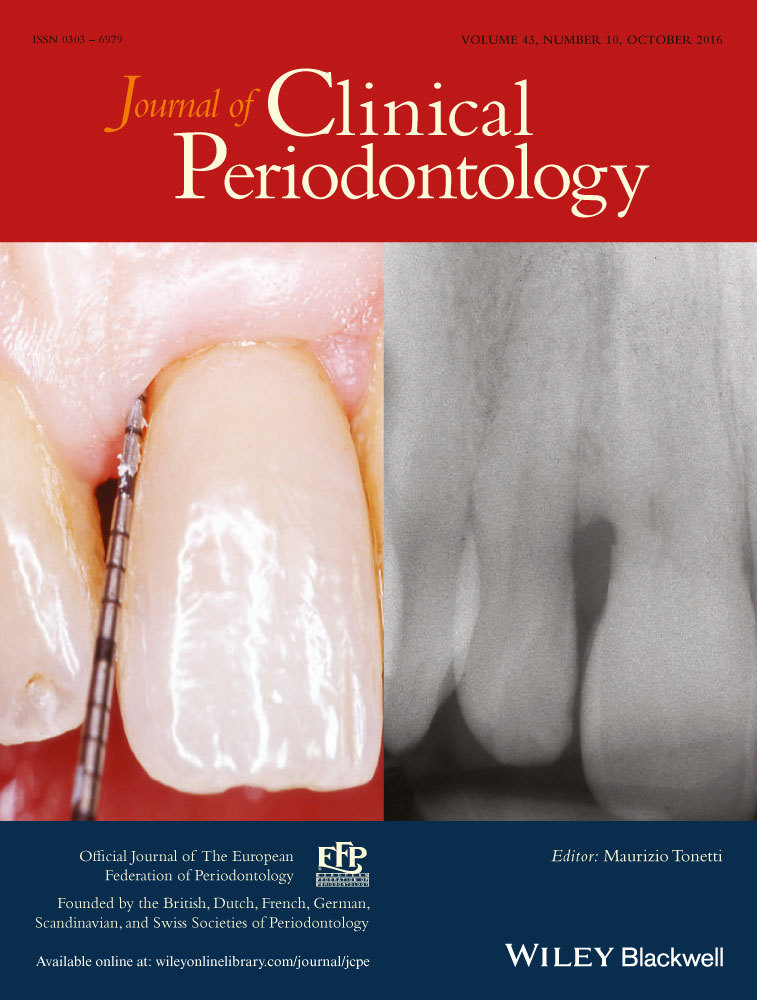Thirty-year stability after regeneration of a deep intrabony defect: a case report
Conflict of interest and source of funding statement
The authors report no conflict of interests related to the study.
Abstract
Aims
Report clinical improvements and 30-year stability of clinical outcomes of an intrabony defect treated with non-resorbable barriers and mucogingival surgery.
Methods
A 18-year-old male presenting with a very severe intrabony defect at the upper right central incisor was treated with periodontal regeneration with non-resorbable barriers and a fibrin-fibronectin glue. The barriers were removed after 3 months. At 6 months, a free gingival graft (FGG) was positioned to improve mucogingival conditions. The patient was enrolled into a 6-month supportive periodontal care programme (SPC) for 30 years.
Results
Clinical attachment level (CAL) of 16 mm was associated with a 12 mm osseous defect and a pocket (PD) 14 mm deep. At 1 year, a CAL of 5 mm was associated with a PD of 2 mm. The 5 mm gingival recession measured at 6 months and treated with FGG was reduced to 3 mm. Measurements taken at 10, 20 and 30 years showed a consistent creeping of the gingival margin. At 30-year examination, CAL gain was 12 mm associated with a 2 mm PD and a minimal gingival recession.
Conclusions
This case demonstrates that it is possible to treat a very severe infrabony pocket applying regeneration and mucogingival surgery and to maintain the clinical outcomes for 30 years.




